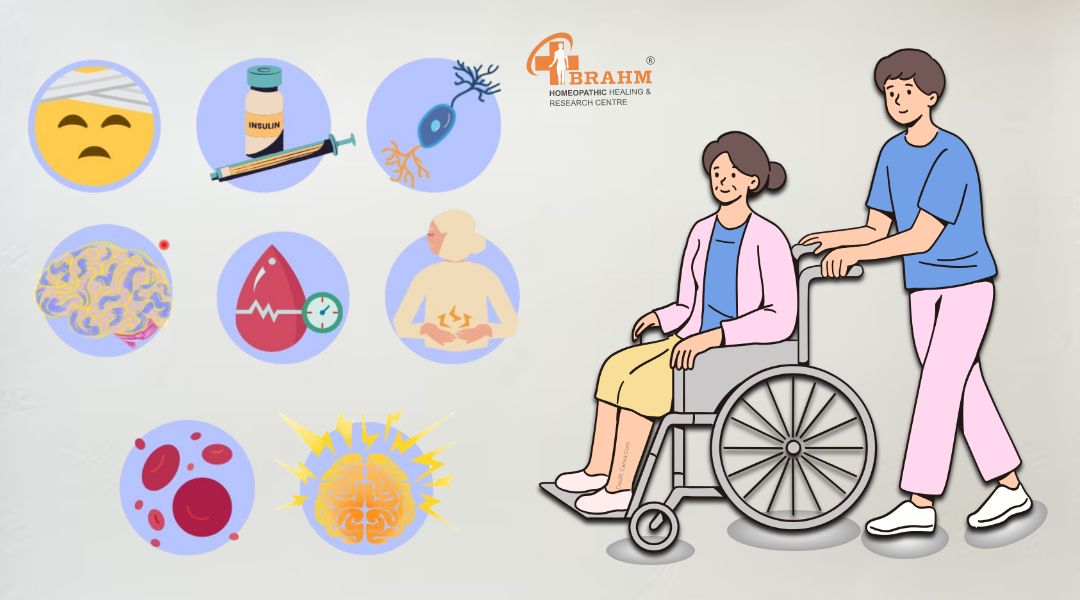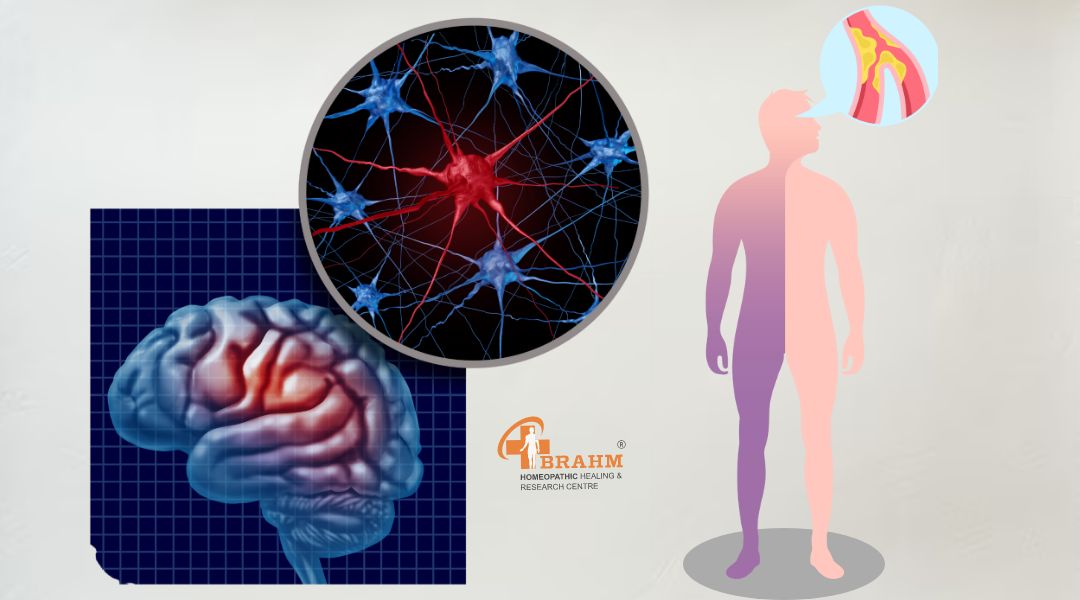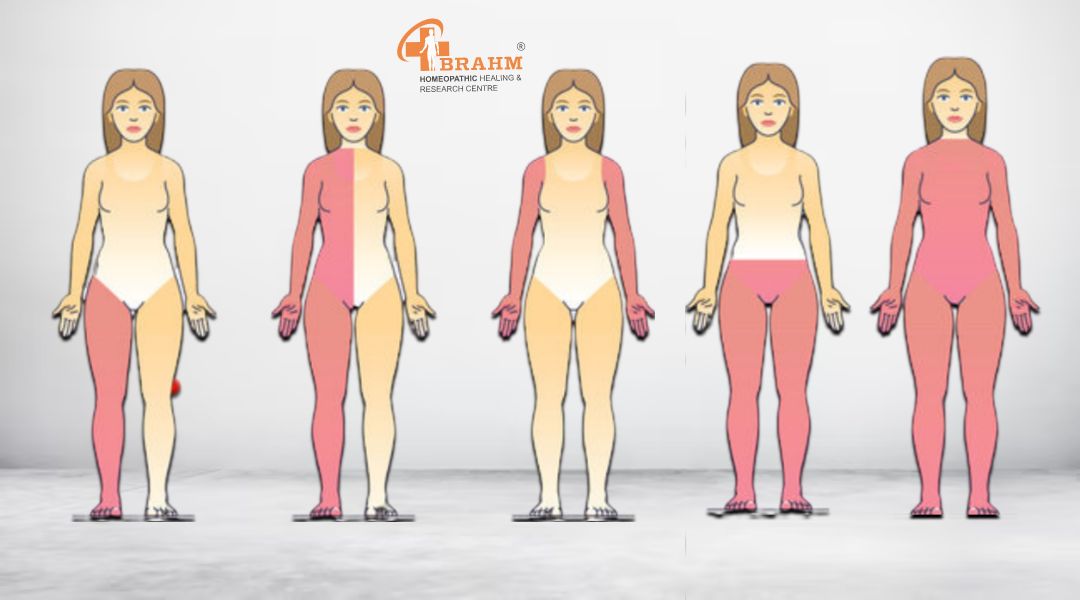
paralysis attack symptoms in hindi | face paralysis treatment in hindi | body ke lakva ko kese thik kare
What is Paralysis?
Paralysis is a loss or impairment of voluntary muscle function, affecting one or more muscles, muscle groups, or entire regions of the body. It can be categorized into monoplegia, hemiplegia, paraplegia, quadriplegia, or diplegia. Causes include trauma, neurological conditions, degenerative disorders, infections, autoimmune disorders, and congenital conditions. Symptoms include inability to move affected muscles, weakness, loss of sensation, and stiffness. Diagnosis involves a comprehensive evaluation.
Causes of Paralysis?

Paralysis Causes Overview
Traumatic Injuries:
• Injuries to the spinal cord, brain, or peripheral nerves can cause paralysis.
• Damage disrupts the transmission of signals between the brain and muscles.
Neurological Conditions:
• Stroke: Blockage or rupture of blood vessels in the brain can lead to hemiplegia.
• Spinal Cord Injury: Damage to the spinal cord can result in paralysis.
• Multiple Sclerosis (MS)
: An autoimmune disease affecting the central nervous system.
• Amyotrophic Lateral Sclerosis (ALS): A progressive neurodegenerative disorder affecting motor neurons in the brain and spinal cord.
• Guillain-Barré Syndrome (GBS): An autoimmune disorder characterized by acute inflammation of peripheral nerves.
• Cerebral Palsy: Permanent movement disorders that appear in early childhood.
Degenerative Conditions:
• Muscular Dystrophy: Genetic disorders characterized by progressive muscle weakness and degeneration.
• Amyotrophic Lateral Sclerosis (ALS): A progressive neurodegenerative disorder affecting motor neurons in the brain and spinal cord.
• Spinal Muscular Atrophy (SMA): A genetic disorder affecting the motor neurons in the spinal cord.
Infections:
• Infections affecting the nervous system can lead to paralysis due to inflammation, nerve damage, or destruction of neural tissue.
Autoimmune Disorders:
• Autoimmune disorders involve the immune system attacking the body's own tissues, leading to inflammation, demyelination, and paralysis.
Congenital Conditions:
• Some individuals may be born with conditions that predispose them to paralysis.
Symptoms of Paralysis?

Paralysis: A Comprehensive Overview
• Characterized by the inability to move affected muscles voluntarily.
• Common features include:
- Loss of Movement: Inability to move affected muscles or muscle groups.
- Muscle Weakness: Manifestation of reduced muscle strength, decreased muscle tone, or difficulty generating force during voluntary movements.
- Loss of Sensation: Partial or complete loss of sensation in the affected area.
- Altered Reflexes: Changes in reflexes, such as hyperreflexia, hyporeflexia, or absent reflexes.
- Muscle Atrophy: Decrease in muscle mass, size, and strength due to prolonged disuse and lack of muscle activity.
- Spasticity or Flaccidity: Abnormal muscle tone, characterized by either increased or decreased muscle tone.
- Functional Impairments: Difficulty in daily living, mobility, independence, and quality of life.
- Psychological and Emotional Impact: Feelings of frustration, sadness, anxiety, depression, or loss of self-esteem.
- Complications: Pressure ulcers, muscle contractures, joint stiffness, osteoporosis, urinary or bowel dysfunction, respiratory problems, and increased risk of falls or injuries.
- Individual Variability: Features and manifestations vary widely among individuals, depending on factors like the underlying cause, location and extent of nerve damage, age, overall health, and previous functional status.
Diagnosis of Paralysis?

Paralysis Diagnosis Process
• Medical History: Involves a comprehensive evaluation of symptoms, recent injuries, trauma, surgeries, family history of neurological disorders, and current medications.
• Physical Examination: Assesses muscle strength, sensation, reflexes, tone, coordination, and gait.
• Neurological Assessment: Evaluates the function of the nervous system, including the brain, spinal cord, and peripheral nerves.
• Diagnostic Imaging: Uses imaging studies like X-rays, MRI, or CT scans to evaluate brain, spinal cord, and surrounding tissues.
• Electrodiagnostic Tests: Performs tests like nerve conduction studies (NCS) and electromyography (EMG) to assess nerve and muscle function.
• Laboratory Tests: Orders blood tests to assess for underlying medical conditions or metabolic abnormalities contributing to paralysis.
• Specialized Testing: In some cases, additional tests or consultations may be necessary to further evaluate the underlying cause of paralysis.
• Differential Diagnosis: Rule out other potential causes of muscle weakness or dysfunction.
• Prompt diagnosis and intervention are essential for optimizing outcomes and improving quality of life for individuals affected by paralysis.
Types of Paralysis?

Paralysis Types Overview
• Monoplegia: A paralysis affecting one limb or part of the body, often resulting from stroke or traumatic brain injury.
• Hemiplegia: A paralysis affecting one side of the body, often due to brain or spinal cord damage.
• Paraplegia: A paralysis affecting both legs and often the lower trunk, often due to spinal cord injury or disease.
• Quadriplegia (Tetraplegia): A paralysis affecting all four limbs and usually the trunk, often due to injury or disease affecting the cervical region of the spinal cord.
• Diplegia: Paralysis affecting corresponding parts on both sides of the body, often due to conditions like cerebral palsy or certain neurological disorders.
• Flaccid Paralysis: Characterized by decreased muscle tone and loss of voluntary movement due to damage to motor nerves or muscles.
• Spastic Paralysis: Characterized by increased muscle tone, stiffness, and involuntary muscle contractions due to damage to the upper motor neurons in the brain or spinal cord.
• Partial Paralysis: Incomplete or partial loss of voluntary muscle function in a specific area of the body, involving varying degrees of weakness, sensory loss, or movement impairment.
Adverse effects of Paralysis?
Paralysis: A Comprehensive Overview
• Loss of Mobility: Paralysis results in voluntary muscle function loss, impairing independence and daily activities.
• Functional Limitations: Paralysis can cause functional limitations affecting self-care tasks, mobility, and participation in activities.
• Dependence on Others: Individuals may become dependent on caregivers or family members, impacting autonomy, privacy, and quality of life.
• Pressure Ulcers (Bedsores): Immobility and prolonged sitting can increase the risk of developing pressure ulcers, leading to pain and complications.
• Muscle Atrophy: Lack of muscle activity in paralyzed limbs can lead to muscle weakness and atrophy, causing loss of strength, flexibility, and mobility.
• Joint Stiffness and Contractures: Immobility and lack of movement in paralyzed joints can lead to joint stiffness, contractures, and loss of joint range of motion.
• Respiratory Complications: Paralysis affecting breathing muscles can lead to respiratory complications, posing significant health risks.
• Bladder and Bowel Dysfunction: Paralysis affecting nerves controlling bladder and bowel function can lead to urinary or fecal incontinence, retention, or dysfunction, affecting hygiene, social interactions, and quality of life.
• Psychological and Emotional Impact: Paralysis can cause feelings of frustration, sadness, anger, anxiety, depression, or loss of self-esteem.
• Social Isolation and Participation Restrictions: Paralysis may lead to social isolation, reduced participation in social activities, and limitations in social interactions, employment, or recreational pursuits.
• Financial Burden: Paralysis can result in significant financial burdens due to medical expenses, assistive devices, home modifications, caregiving costs, and lost income or employment opportunities.
Diet in Paralysis:

Paralysis-Related Dietary Considerations
• Adequate Nutrition: Incorporate protein, carbohydrates, fats, vitamins, and minerals for overall health and recovery. Protein-rich foods are crucial for muscle repair and maintenance.
• Hydration: Stay well-hydrated throughout the day for proper digestion, preventing urinary tract infections, and regulating body temperature. Water is the best choice for hydration.
• Fiber-Rich Foods: Include fruits, vegetables, whole grains, legumes, nuts, and seeds for digestive health and bowel regularity. Fiber can prevent constipation.
• Balanced Meals: Incorporate a mix of carbohydrates, lean proteins, healthy fats, and dairy or dairy alternatives.
• Portion Control: Pay attention to portion sizes and avoid overeating to prevent weight gain and health complications.
• Healthy Fats: Include avocados, nuts, seeds, olive oil, fatty fish, and flaxseeds for brain health, inflammation control, and overall well-being.
• Avoid Excessive Sugar and Processed Foods: Choose whole, unprocessed foods whenever possible.
• Individualized Approach: Consider individual preferences, dietary restrictions, and specific nutritional needs when planning meals. Consult with a registered dietitian or healthcare provider for personalized dietary advice.
• Bowel and Bladder Function Considerations: Dietary modifications may help support bowel regularity and urinary tract health.
• Supplementation: In some cases, supplementation with vitamins or minerals may be necessary to address specific nutritional deficiencies or support overall health.
NOTE:
Overall, maintaining a balanced and nutritious diet is important for individuals with paralysis to support overall health, optimize physical function, and prevent complications. By making healthy dietary choices and adopting a balanced lifestyle, individuals with paralysis can support their overall well-being and quality of life.
Convectional Treatment & Treatment guide of Paralysis:
Currently, homeopathy does not offer a definitive treatment for paralysis. While homeopathy emphasizes individualized treatment and holistic approaches to health, there is limited scientific evidence to support its efficacy in treating paralysis caused by neurological conditions or spinal cord injuries. Homeopathic remedies are based on the principle of "like cures like" and are selected based on the specific symptoms and constitutional characteristics of the individual. However, when it comes to paralysis, the underlying causes are often complex and may require specialized medical interventions, rehabilitation therapies, and supportive care tailored to the individual's needs. While homeopathy may be used as a complementary approach to support overall health and well-being in individuals with paralysis, it is not considered a primary treatment modality for addressing the underlying neurological deficits or promoting functional recovery. As such, individuals with paralysis should seek guidance from qualified healthcare professionals for appropriate medical management and rehabilitation strategies tailored to their specific condition and needs.


















